MPC Vs Maschine: Which Is the Best for You?
Is is as simple as hip-hop or techno?
With the release of the new Live III, the MPC Vs Maschine battle is hotter than ever. Which series is right for you, Akai or native Instruments?
MPC Vs Maschine
Fewer gear rivalries are as hotly contested as MPC Vs Maschine. Both are incredible series of grooveboxes, with Akai Professional’s MPC line claiming hip-hop history and breadth of devices, while Native Instruments’ Maschine machines have fervent supporters making genres of electronic music. If you’re in the market for a music production center, which is right for you? Is it as simple as hip-hop or techno?
In this article, we’ll take a look at the two competing series, MPC Vs Maschine, as well as some of the devices both sides have to offer. Ready to pick a side?
Many of the products mentioned in this story are available at Thomann*.
MPC Vs Maschine: Akai Professional MPC Series
The first Akai Professional MPC dropped in 1988. Designed by Roger Linn as part of a global team that also included David Cockerell of EMS fame, the MPC60 was a drum machine, sampler, and MIDI sequencer in one, a triumvirate that proved extremely popular, particularly with hip-hop producers.
As the series progressed, Akai made it more involved and sophisticated, with the MPC Renaissance in 2012 the first to work with the now common MPC Software, and the MPC Studio of the same year, doing away with the audio interface and acting as a controller for your computer instead. The MPC Touch in 2015 added (you guessed it) a touchscreen and can be seen as the precursor to the modern era of MPC that we’re in now. No longer just a hardware device, it’s a fully fledged music production center with its own DAW inside, complete with effects and instrument plugins.
MPC fans trend towards hip-hop producers and beatmakers in general, as you might guess, although there’s no law that other types of producers can’t use them too.
MPC Live III
Just released, the MPC Live III may be the one to end the MPC Vs Maschine feud, as it’s just so good. In his review, our Lasse said, “The MPC Live III is undoubtedly the most comprehensive and powerful MPC ever made,” and, “There’s almost nothing it can’t do. Classic MPC-style sampling? Check. TR-style step sequencing? Check. Force-style clip launching? Check. Expressive performance with three-dimensional pads and polyphonic aftertouch? Check. Producing on the go without additional hardware? Check. Twenty-four audio channels via USB? Check. The list goes on and on.”
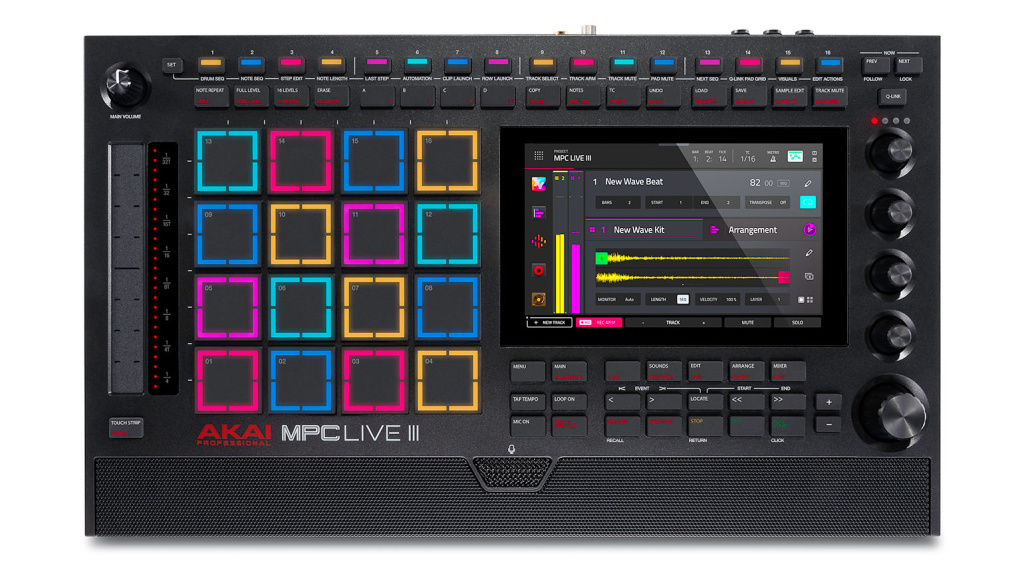
You should really read his review, as there’s way more to say than I can fit in here, but along with what he mentioned, it’s also blisteringly fast, with a hot new processor and the ability to load up to 32 instrument plugin instances and 16 audio tracks seamlessly.
It’s a monster machine – but be warned. It has a steep learning curve.

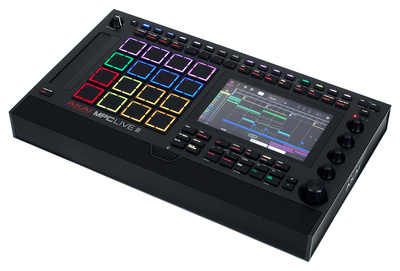
MPC One+
If the Live III seems like overkill and you’re after something closer to the MPC feel of old, check out the MPC One+. Released in 2023 to celebrate the 35th anniversary of the series, the One+ offers the famous 4 x 4 grid of pads (beloved of finger drummers) with the added bonus of polyphonic aftertouch, plus a seven-inch touchscreen for getting around the software.
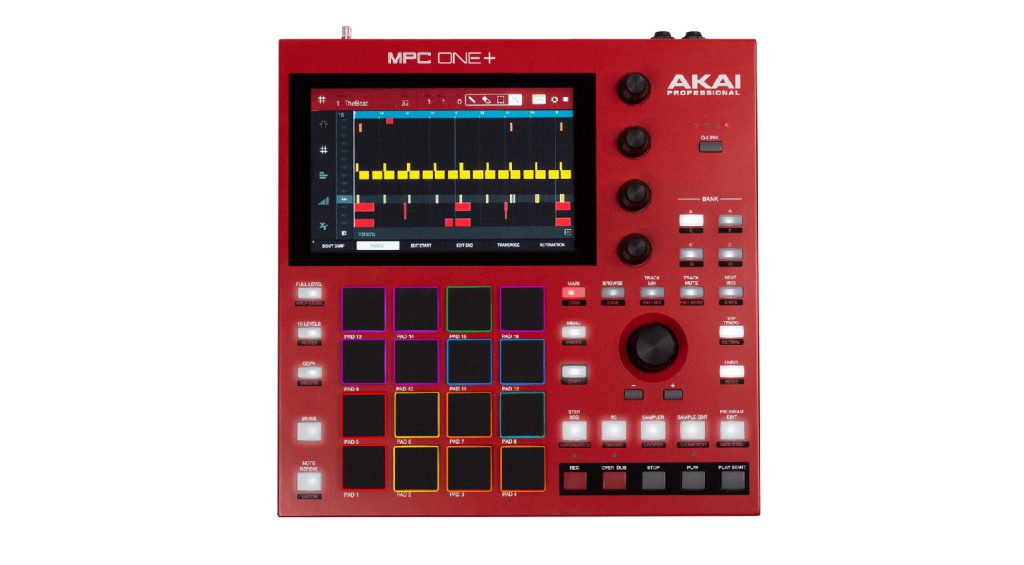
The One+ boasts 16GB of internal memory for holding plenty of samples, plus over 2GB of samples and loops from the get-go. It also offers Bluetooth, Ableton Link, and WLAN connectivity.
It’s also about half the price of the Live III, making it a great entry point into the world of MPC. And a strong challenger in the MPC Vs Maschine battle.

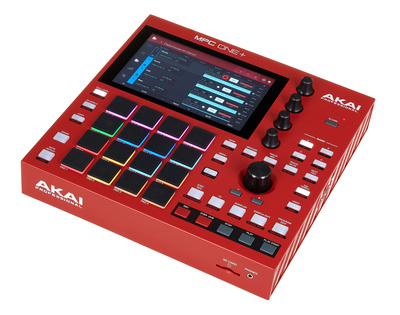
MPC Key 37
I’ll be honest. I’ve never taken to using MPC-style pads to write melodies. For drums, they’re ace, but I much prefer a traditional piano-style keyboard for playing the music part. I guess it was all those piano lessons in my youth. I must not be the only one, as Akai makes keyboard versions of the famous groovebox, the MPC Key 61, and the one I’m recommending here, the MPC Key 37.
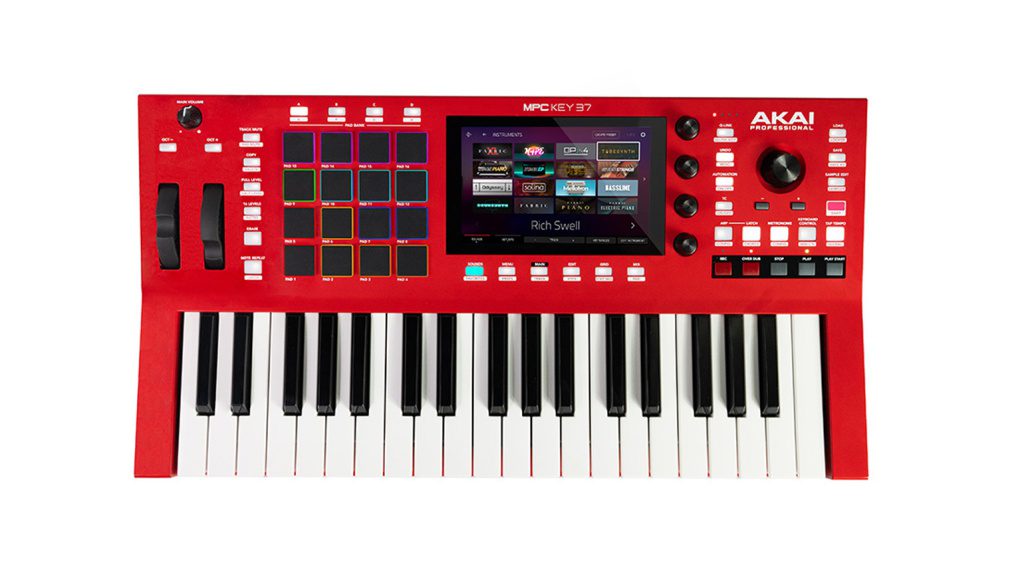
Based on the One+ (above) but with slightly different specs, the MPC Key 37 includes the same 2GB of RAM but ups the internal memory to 32GB and includes 8GB of samples and drum kits plus eight plugin instruments. You get 37 keys to play them (as you might have guessed), plus the usual 16 pads.
If keys are a must, you may have just made your MPC Vs Maschine decision.

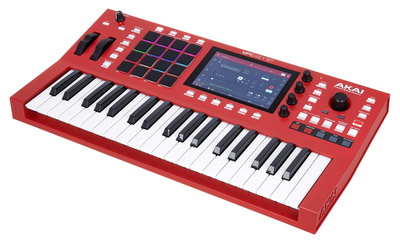
MPC Studio
The most affordable way to play with an MPC, the MPC Studio is a MIDI controller designed to work with MPC software on your computer. Think of it as the MPC experience but tethered to a PC. Hey, the good news is you’ll have a bigger screen to work with.
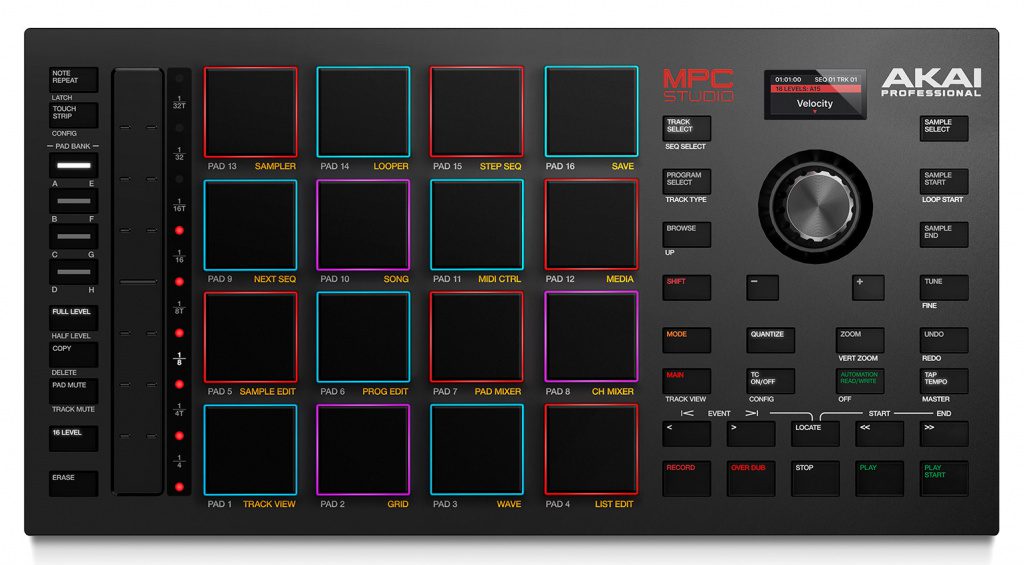
Why go with a Studio? The price, for one. It’s significantly cheaper than other models because of the lack of an audio interface and other components. The software package that comes bundled with it is also fairly comprehensive, with instruments and effects included, plus 10GB of samples.
Note that if you’re after the most recent MPC 3 software experience, you’ll need to go for hardware, as the computer DAW version is still at 2 (although MPC Desktop 3 is in beta now).

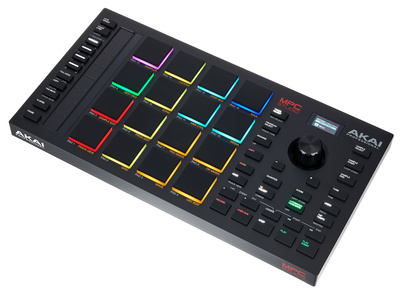
MPC Vs Maschine: Native Instruments Maschine Series
In 2009, Native Instruments debuted Maschine, a hardware controller and desktop software package aimed at beatmaking. The company followed this with Maschine Mikro, a smaller and cheaper version of the controller, in 2011. Over the years, NI has continued to release improved versions of the controllers and software, and is now up to Maschine 3, which adds new features like stem separation to the software.
Maschine has always been decidedly more electronic in its focus, with many NI instruments and plugins appearing inside the software, and not to mention the supplemental Maschine Expansions aimed at techno and other dance music producers. This has been changing lately, though, with NI announcing a partnership with Akai to bring instruments and expansions to the MPC series, a move that was met with anger by many Maschine users.
NI also hasn’t released a new Maschine since the standalone Maschine+ in 2020. But with Maschine 3 software finally releasing this year, and NI paying more attention to its synthesizers (like Massive X Player) in general, hopefully we’ll see a revival of the Maschine line soon.
Maschine+
The flagship of the line is Maschine+, the standalone Native Instruments beatmaker and a serious contender in the MPC vs Maschine face-off.
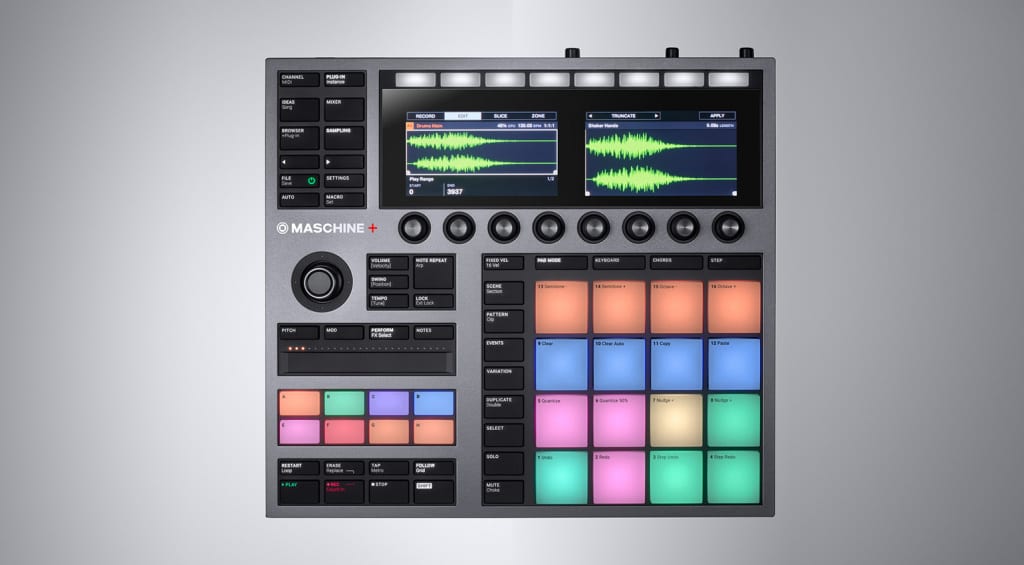
Looking like a Maschine MK3 in metal, the Plus version ships with an 8GB library of Maschine Expansions, plus instruments and effects like FM8, Massive, Monark, Prism, Kontakt Factory Selection, Space, Phasis, and more. If you’re an NI power user, this will be music to your ears.
Unlike some hardware MPCs, Maschine+ does not contain a battery, a touch display, or an integrated loudspeaker, so it’s best not to think of it as a completely portable device. Hopefully, we’ll see these features in a future model.

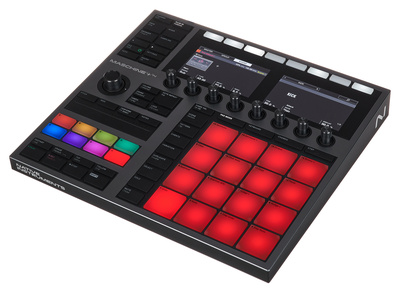
Maschine MK3
Maschine started as a controller, and Maschine MK3 is currently the top model in the controller series. It does a good job of bridging the top Maschine+ and the budget model, Mikro, with a pair of high-resolution color displays, jog control, touch strip and – crucially – a built-in 24-bit/96kHz audio interface with stereo and microphone inputs, and line and headphone outputs. It also offers a variety of buttons, such as Variation, Events, Chords, Step, Pitch, and Macro, to help you access parameters quickly.
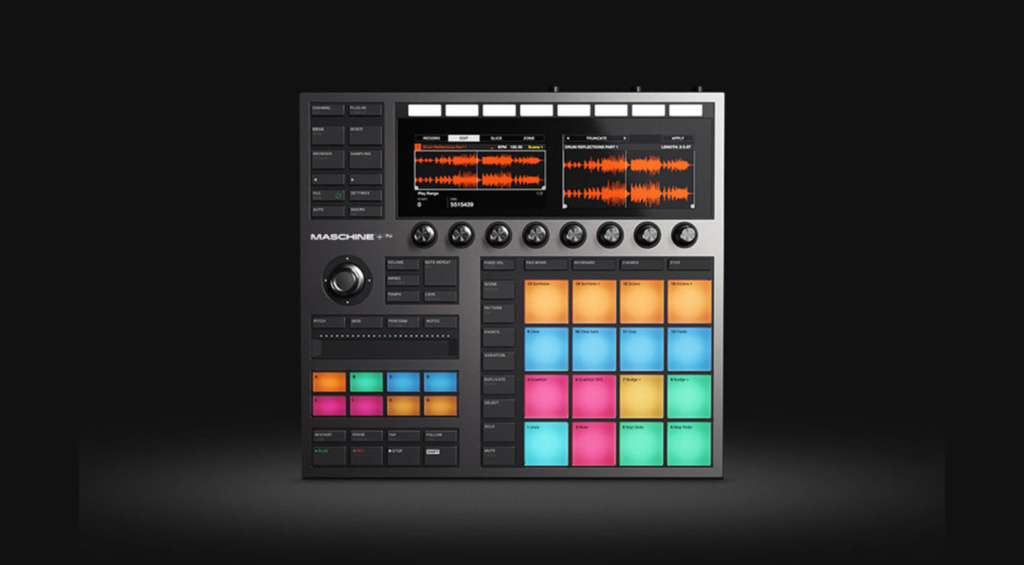
You will need to stay tethered to your computer and standalone software or plugin with the MK3, but with all of its amenities, including the audio interface, it offers a lot more than just MIDI control.
If you’re a studio rat and make any flavor of electronic music, trap, or modern R&B, this is the Maschine for you.

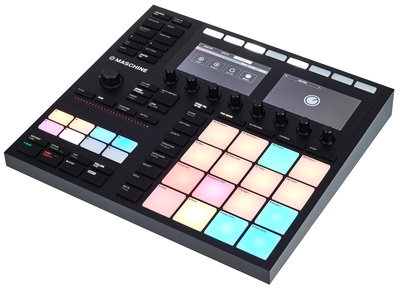
Maschine Mikro
It’s confession time. I’m a longtime Maschine user, but I’ve only ever used it as a drum machine plugin. It’s nice having the ability to make full songs and run plugins inside it, but I prefer to use Maschine as part of a project in Logic Pro or Ableton Live, and am happy to just bang on the pads to make beats. If that sounds like you, then look no further than Maschine Mikro.
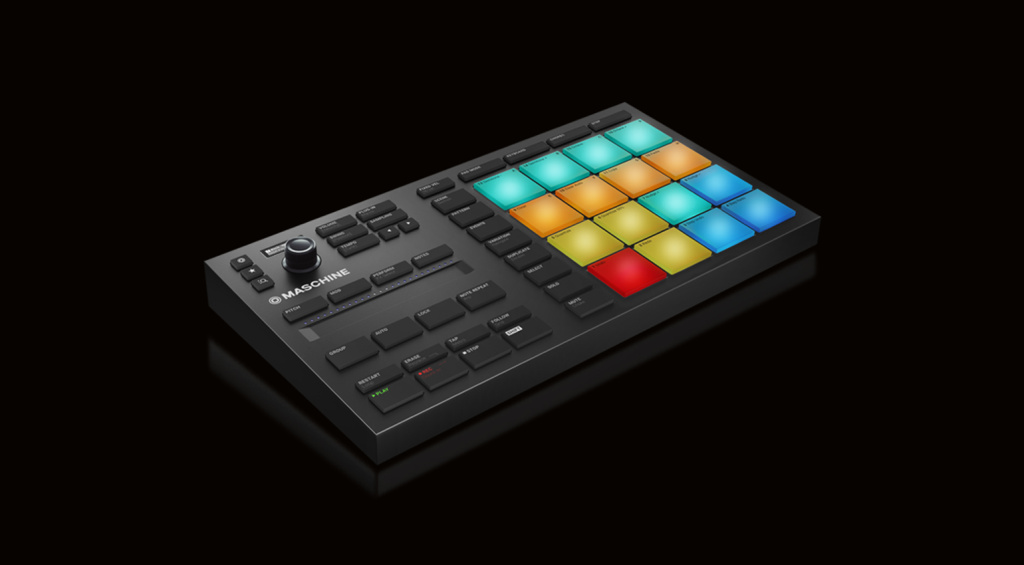
The most affordable entry into the world of Maschine, Mikro doesn’t entirely lose the screen – there’s a small OLED present – but most of the time you’ll be looking at your computer. Rather than take up lots of real estate with screen, the Mikro gives you that lovely jog control, a dual-control Smart Strip, and the 16 pads.

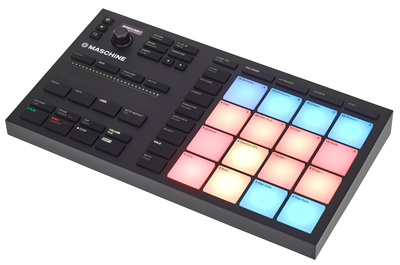
MPC Vs Maschine: Decision Time
When it comes down to MPC Vs Maschine, which is best for you? Both are powerful series with a variety of machines to suit different needs. While the latest MPC units are the most technically advanced, they can also be pricey. A Maschine-style controller and software combo may be better for you and your budget.
Probably the biggest determinant of which you should go for is the software itself. Although similar from the outside, and both can make any genre of music (history be damned), the workflows are very different. I’ve always preferred the Maschine process, but that’s just me. Although there’s no trial version of the Maschine software, you can try out MPC Software 2 for free. If you’re leaning towards Akai, download it and see what you think. If it makes you pull your hair out, Maschine may be the better option after all, which also allows you to run it without hardware.
More Information
*Note: This article contains advertising links that help us pay for this site. Don’t worry: the price for you will always be the same! If you buy something through these links, we will receive a small commission. Thank you for your support!
5 responses to “MPC Vs Maschine: Which Is the Best for You?”

You are currently viewing a placeholder content from Facebook. To access the actual content, click the button below. Please note that doing so will share data with third-party providers.
More InformationYou are currently viewing a placeholder content from Instagram. To access the actual content, click the button below. Please note that doing so will share data with third-party providers.
More InformationYou are currently viewing a placeholder content from X. To access the actual content, click the button below. Please note that doing so will share data with third-party providers.
More Information
 4,3 / 5,0 |
4,3 / 5,0 | 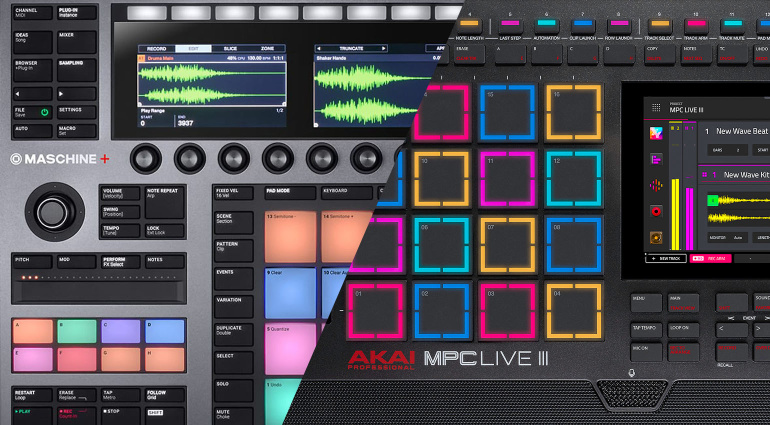


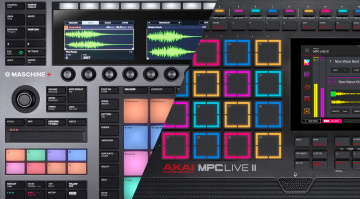

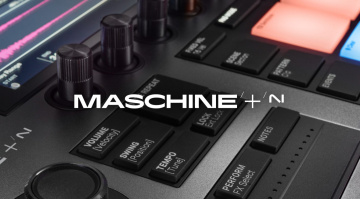
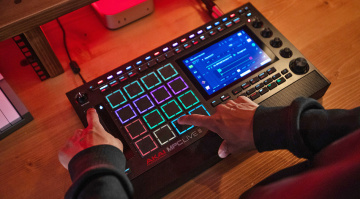
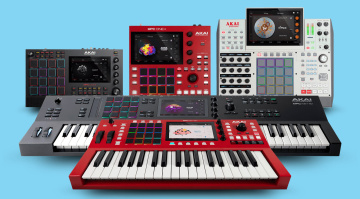
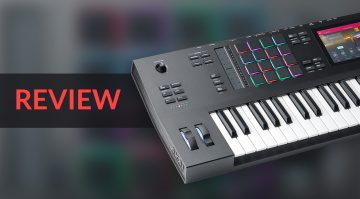
To be fair to Akai, they do keep updating the MPC, they’ve never ditched the groovebox from the very first MPC to today. Their new one is expensive but well-specced. Maschine has been going forever as well, NI have kept pushing it and it’ll load any VST. They’re both good, but different. It would not be a case of one or the other, but more one of how you wanted to make stuff, hardware or computer. If one way suits you more than the other, then you have a choice of which hardware or program to buy. My viewpoint is that you get more from hardware in the long run, with it being a physical artifact you get a connection to it that is perhaps missing from software? But if I was just starting out I would go software first, learn the ropes, then maybe go hardware later if I could afford it.
I like the current generation MPC worlkflow, but like the writer I am waiting for a more updated hardware spec key 61 or 37. Hopefully, we’ll see one soon.
That may be a smart decision. I just updated my Key 37 with the MPC Pro Pack. The new MPC X might just entice me though.
Akai wins. If i had the money i will go for the Live 3. Way better software.
I have been a Maschine user since Maschine 1 and am really thinking of changing for MPC Live III. Although there are a lot of similarities, for me Akai did it for me when it comes to the arranger. But the touch screen, cpu, expand options, transfer via wifi, turntable connection, xlr mic inputs, more logic (for me) button and scroll setups.
What worries me is the Akaii workflow, but i think it is starting to be a myth because it looks great, But in practice is another thing…